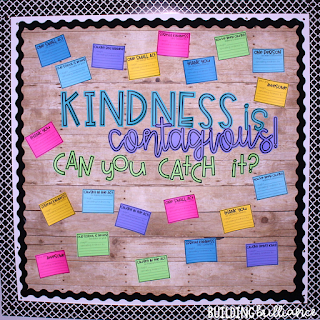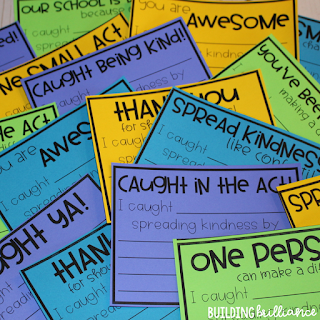Let's flash back to January of 2017, shall we? I was 7ish months pregnant with a high risk pregnancy that had left me drained emotionally. Then, I got the flu. The flu. That drained me physically. If you've never had the flu, I can only describe it as feeling like your body is shutting down. I remember laying in bed one afternoon, literally contemplating if I should just pee myself because getting up and walking the 10 feet the the bathroom seemed like an impossibly exhausting task. (TMI? That's my specialty.)
Here I was, broken tired. And while I was laying in my bed, believing that this was what death felt like, I got a few emails from parents informing me of events that had happened in my class. I can only describe them as "mean girl" issues. I couldn't deal.
First, I cried (did I mention super pregnant, and super overwhelmed?) Next, I pulled out my computer and typed out the only thing I could think of, "Kindness: The only thing more contagious than the flu!" That was actually the first draft of this bulletin board, y'all! Probably not what people want outside their walls, so it quickly morphed into what you see here.
When I came back from being sick, I reviewed our community expectations with my class. We discussed how we treat others, and how we respond when we see others being treated disrespectfully. We talked about being bold. A word we used all year long. We have discussed being bold as doing the right thing, even when it's hard, even when we know it won't be popular. We are a class that does the right thing, and by doing the right thing, we will make our classroom, our school, and our community better.
So I challenged my kids to be bold. Then I challenged them to look for others showing the character values that we spent so much time practicing all year. And not just to look for them, but to notice them. And when they noticed them, to write them down on these notes, and pin them to the bulletin board. On these notes, they got to highlight who they saw showing kindness, but they did not sign it. This was not meant to be a popularity contest. It was not meant to be friends lifting each other up. I wanted genuine, anonymous responses.
My heart leapt for joy, when within the first few days, our board was already covered in the sweetest notes. My kids were asking if they could spend their recess writing notes of kindness that they witnessed. Kids from other classes started asking if they could write down things that they saw. It was beautiful. My kids were even shouting out teachers, cafeteria workers, and the custodian probably had more notes than anyone. I tried to keep tabs to make sure everyone was being noticed, but our board covered up so quickly that notes were getting pinned on top of each other.
Dummy me, I left for maternity leave without taking a picture of it all beautifully filled, but it's amazing what kids can notice when we provide them with the opportunity!
Want to do this activity in your class? It's a FREEBIE! :)
YOU CAN FIND IT HERE:
OR PIN IT FOR LATER:















